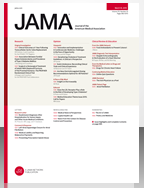 Here’s a “study” reported by a member of the “Fat Head” group on Facebook.
Here’s a “study” reported by a member of the “Fat Head” group on Facebook.
Misleading title: Association Between Dietary Whole Grain Intake and Risk of Mortality
Here’s the abstract, with my comments highlighted in red.
Original Investigation | March 2015
Association Between Dietary Whole Grain Intake and Risk of Mortality
[Compared to what?]
Two Large Prospective Studies in US Men and Women
Hongyu Wu, PhD1;
Alan J. Flint, MD, ScD1;
Qibin Qi, PhD2;
Rob M. van Dam, PhD3,4;
Laura A. Sampson, RD1,5;
Eric B. Rimm, ScD1,5,6;
Michelle D. Holmes, MD, DrPH5,6;
Walter C. Willett, MD, DrPH1,5,6;
Frank B. Hu, MD, PhD1,5,6; Qi Sun, MD, ScD1,5Author Affiliations
- Department of Nutrition, Harvard School of Public Health, Boston, Massachusetts
- Department of Epidemiology and Population Health, Albert Einstein College of Medicine, Bronx, New York
- Saw Swee Hock School of Public Health and Yong Loo Lin School of Medicine, National University of Singapore, Singapore, Republic of Singapore
- National University Health System, Singapore, Republic of Singapore
- The Channing Division of Network Medicine, Department of Medicine, Brigham and Women’s Hospital, Boston, Massachusetts
- Department of Epidemiology, Harvard School of Public Health, Boston, Massachusetts
JAMA Intern Med. 2015;175(3):373-384. doi:10.1001/jamainternmed.2014.6283.
Importance
Higher intake of whole grains has been associated with a lower risk of major chronic diseases, such as type 2 diabetes mellitus and cardiovascular disease (CVD), although limited prospective evidence exists regarding whole grains’ association with mortality.
[Our sponsor thinks that’s important]Objective
To examine the association between dietary whole grain consumption and risk of mortality.
[Actual objective was to get more grant money from sponsor]Design, Setting, and Participants
We investigated 74,341 women from the Nurses’ Health Study (1984–2010) and 43,744 men from the Health Professionals Follow-Up Study (1986–2010), 2 large prospective cohort studies. All patients were free of CVD and cancer at baseline.
[Observational “studies” which have been thoroughly debunked, but we don’t want you to know that.]Main Outcomes and Measures
Hazard ratios (HRs) for total mortality and mortality due to CVD and cancer according to quintiles of whole grain consumption, which was updated every 2 or 4 years by using validated food frequency questionnaires.
[Dietary questionaires have been clinically shown to be less reliable than guessing, but we decided to use that data anyway because we liked it.]Results
We documented 26,920 deaths during 2,727,006 person-years of follow-up. After multivariate adjustment for potential confounders, including age, smoking, body mass index, physical activity, and modified Alternate Healthy Eating Index score, higher whole grain intake was associated with lower total and CVD mortality but not cancer mortality: the pooled HRs for quintiles 1 through 5, respectively, of whole grain intake were 1 (reference), 0.99 (95% CI, 0.95-1.02), 0.98 (95% CI, 0.95-1.02), 0.97 (95% CI, 0.93-1.01), and 0.91 (95% CI, 0.88-0.95) for total mortality (P fortrend?<?.001); 1 (reference), 0.94 (95% CI, 0.88-1.01), 0.94 (95% CI, 0.87-1.01), 0.87 (95% CI, 0.80-0.94), and 0.85 (95% CI, 0.78-0.92) for CVD mortality (P fortrend?<?.001); and 1 (reference), 1.02 (95% CI, 0.96-1.08), 1.05 (95% CI, 0.99-1.12), 1.04 (95% CI, 0.98-1.11), and 0.97 (95% CI, 0.91-1.04) for cancer mortality (P fortrend?=?.43). We further estimated that every serving (28 g/d) of whole grain consumption was associated with a 5% (95% CI, 2%-7%) lower total morality or a 9% (95% CI, 4%-13%) lower CVD mortality, whereas the same intake level was nonsignificantly associated with lower cancer mortality (HR, 0.98; 95% CI, 0.94-1.02). Similar inverse associations were observed between bran intake and CVD mortality, with a pooled HR of 0.80 (95% CI, 0.73-0.87; P fortrend < .001), whereas germ intake was not associated with CVD mortality after adjustment for bran intake.
[IOW, we massaged the numbers until we got the answers desired by our sponsor. And we wrote it up in a format that is guaranteed to make your eyes glaze over so that you wouldn’t catch that part.]Conclusions and Relevance
These data indicate that higher whole grain consumption is associated with lower total and CVD mortality in US men and women, independent of other dietary and lifestyle factors. These results are in line with recommendations that promote increased whole grain consumption to facilitate disease prevention.
[Yay! We drew the Politically Correct conclusion! Actually, we wrote this part before we did the “study”]
